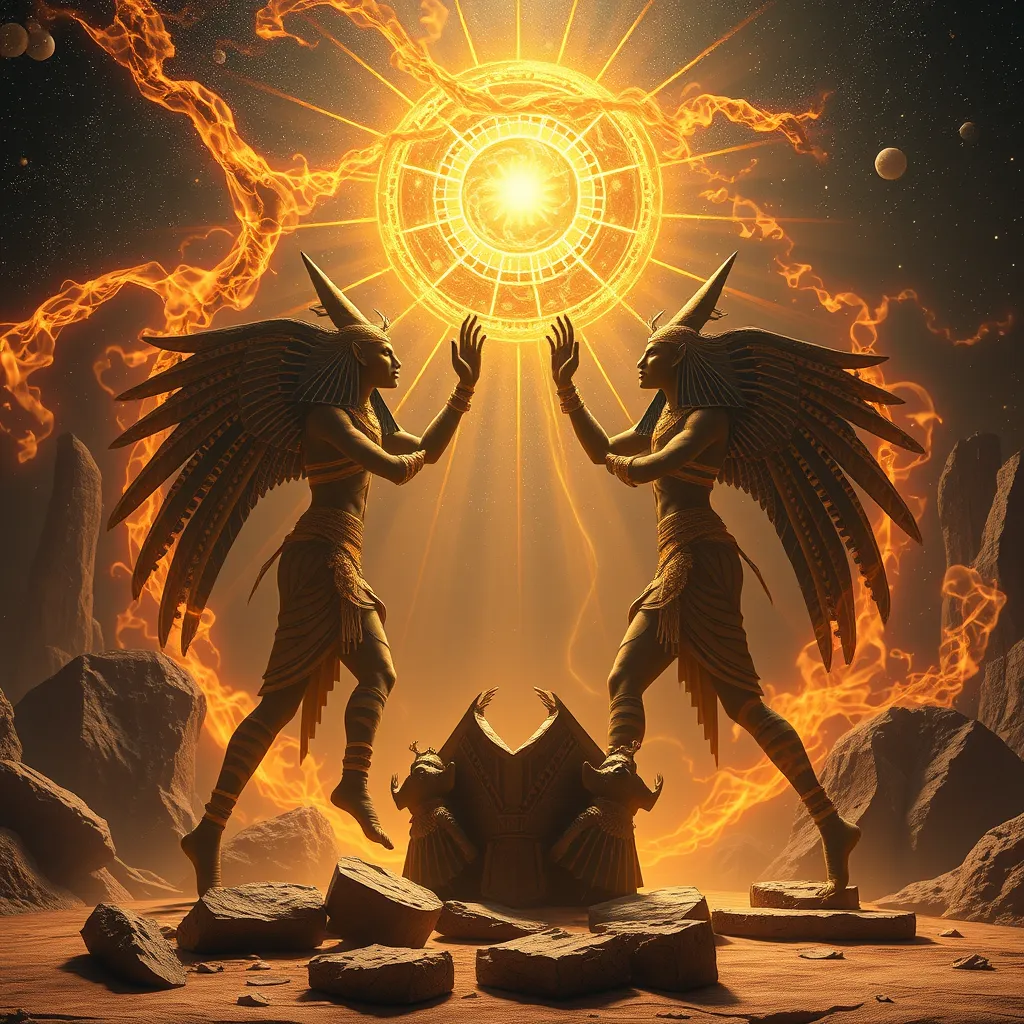The Duat: Exploring the Cosmic Dance of Life and Death
I. Introduction to the Duat
The Duat, often referred to as the underworld or the realm of the dead in ancient Egyptian mythology, holds a significant place in the understanding of life, death, and what lies beyond. It is a complex spiritual domain where the souls of the deceased embark on a transformative journey after death. The Duat is not merely a shadowy afterlife but a vibrant realm filled with challenges, gods, and opportunities for rebirth.
In ancient Egyptian belief, life and death were intertwined in a cosmic cycle. The Duat served as the gateway to the afterlife, illustrating the Egyptians’ profound understanding of mortality and the spiritual journey that follows. It represents both an ending and a new beginning, embodying the belief that the soul continues to exist beyond physical death.
II. The Mythological Framework of the Duat
The Duat is populated by a rich tapestry of gods and goddesses who play crucial roles in the afterlife. These divine beings oversee the journey of souls and the various aspects of the Duat. Among the most significant deities associated with this realm are:
- Osiris: The god of the afterlife, resurrection, and fertility, who judges the dead.
- Isis: The goddess of magic and motherhood, who aids the deceased in their journey.
- Thoth: The god of wisdom and writing, who records the judgment of souls.
- Anubis: The god of embalming and the protector of graves, who guides souls through the Duat.
Key mythological narratives associated with the Duat include the death and resurrection of Osiris, which symbolizes the eternal cycle of life and rebirth. This myth highlights the importance of the Duat as a place of transformation where the soul can achieve immortality.
III. The Geography of the Duat
The Duat is depicted as a vast and complex landscape that varies greatly in its realms and features. It is often described as a dark and mysterious place filled with rivers, lakes, and various zones representing different stages of the afterlife. Some key areas within the Duat include:
- The Lake of Fire: A treacherous place where souls face purification.
- The Field of Reeds: A paradise where the righteous can enjoy eternal life.
- The Hall of Two Truths: The location where the heart is weighed against the feather of Ma’at.
The symbolism of these various areas reflects the moral and ethical beliefs of ancient Egyptians. The contrasting landscapes illustrate the consequences of one’s actions in life, where virtuous souls are rewarded while the wicked face punishment.
IV. The Journey through the Duat
The process of dying and entering the Duat is a significant aspect of ancient Egyptian belief. Upon death, the soul embarks on a journey through the Duat, guided by deities and aided by spells and rituals. This journey is fraught with trials and challenges that the deceased must overcome to reach the afterlife successfully.
Some of the key trials faced by souls include:
- Encounters with Serpents: Dangerous creatures that represent chaos and obstacles.
- Crossing the Waters: Navigating treacherous waters that separate the realms.
- Confronting Demons: Facing malevolent entities that seek to hinder progress.
Successfully navigating these challenges allows the soul to reach the Hall of Two Truths, where the ultimate judgment takes place.
V. The Role of the Book of the Dead
The Book of the Dead is a collection of texts and spells that provide guidance to the deceased as they navigate the Duat. This sacred compilation serves several purposes:
- Spells for Protection: Enabling the soul to ward off dangers encountered in the afterlife.
- Instructions for the Journey: Detailing the steps needed to navigate through the Duat.
- Rituals for Rebirth: Offering guidance for achieving eternal life and rebirth.
Rituals and funerary practices were vital in ensuring a successful transition to the Duat. These practices included mummification, offerings, and prayers, all aimed at assisting the deceased on their journey.
VI. The Concept of Judgment in the Duat
One of the most critical aspects of the Duat is the concept of judgment, exemplified by the weighing of the heart ceremony. In this ancient ritual, the heart of the deceased is weighed against the feather of Ma’at, the goddess of truth and justice. This ceremony determines the fate of the soul:
- If the heart is lighter than the feather: The soul is deemed pure and can enter the Field of Reeds.
- If the heart is heavier: The soul is consumed by Ammit, the devourer of the dead, resulting in eternal oblivion.
The significance of Ma’at emphasizes the importance of moral conduct and ethical living in ancient Egyptian society. Adherence to Ma’at was crucial for a successful journey through the Duat.
VII. The Duat in Art and Culture
The Duat has been richly represented in ancient Egyptian art, serving as a source of inspiration for countless works. Tomb paintings, reliefs, and artifacts often depict scenes from the Duat, illustrating the journey of the soul and the various deities associated with the afterlife. These artistic representations serve both religious and cultural purposes:
- Instructional: Educating the living about the afterlife and the rituals needed for the deceased.
- Commemorative: Honoring the deceased and ensuring their safe passage through the Duat.
The influence of the Duat continues to resonate in modern interpretations of death and the afterlife, inspiring literature, art, and spirituality across cultures.
VIII. Conclusion: The Duat’s Legacy in Understanding Life and Death
The Duat represents a profound legacy in the understanding of life and death, reflecting the beliefs and values of ancient Egyptian civilization. Its complex narrative of the afterlife offers insights into the human experience, morality, and the quest for immortality.
As contemporary society grapples with concepts of mortality and existence, the Duat remains relevant in discussions about the afterlife and spiritual journeys. Its enduring impact encourages reflection on the nature of life, death, and what may lie beyond, fostering a deeper understanding of our own existence.




